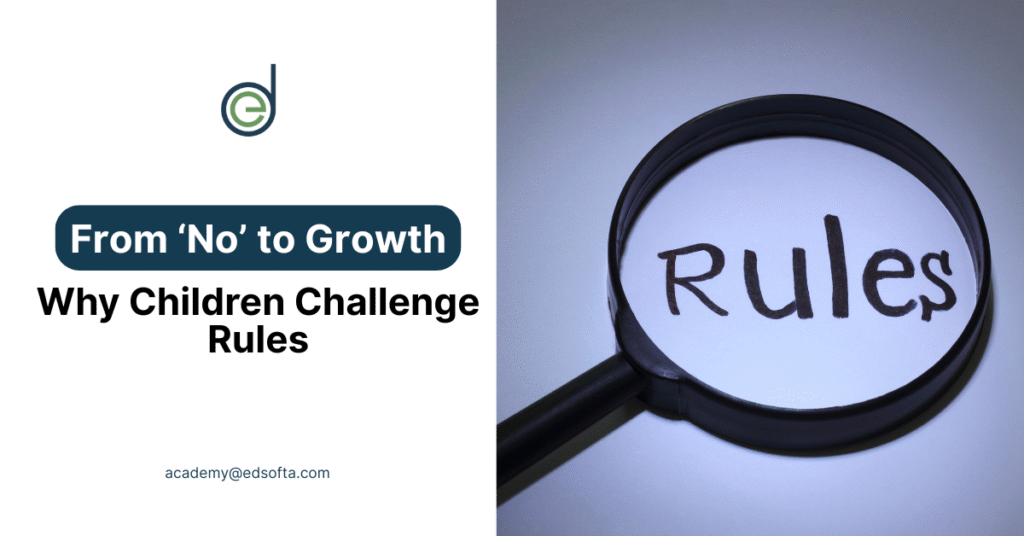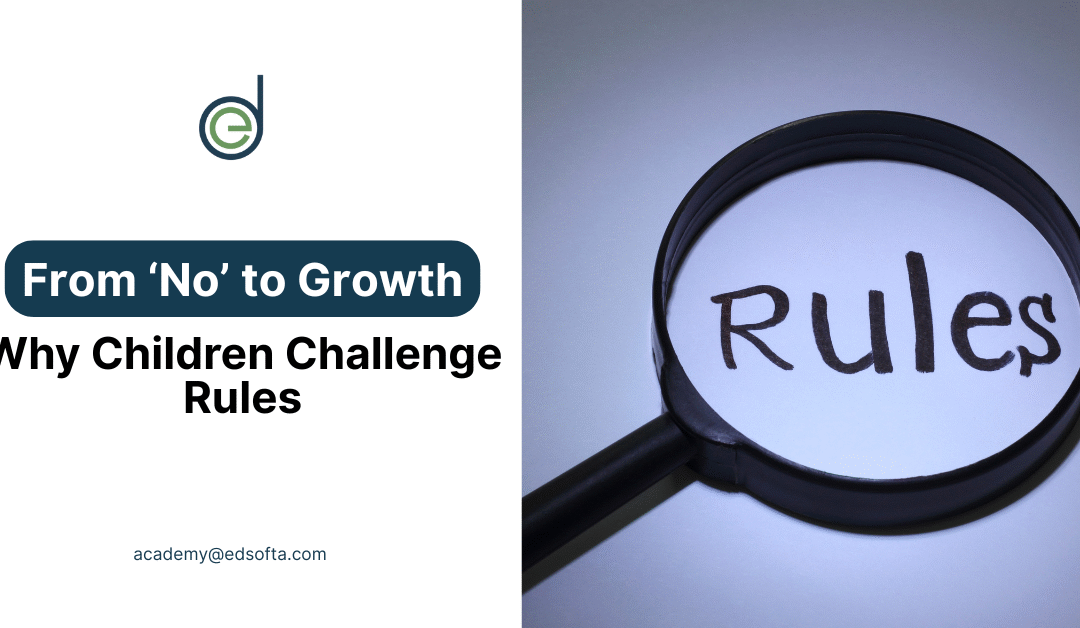From “No” to Growth is not just about discipline but about understanding why children challenge rules and how parents can use those moments to guide them toward independence and maturity. Children between the ages of 7 and 13 are learning more about the world and about themselves every day.
It’s natural for them to test limits, question authority, and explore just how much freedom they have. This is not always a sign of disobedience; often, it is a sign of growth.
As a parent, these moments can feel frustrating, but they also present some of the richest opportunities for teaching. The key is to move beyond seeing “no” as rebellion and instead, treat it as a stepping stone to raising confident, responsible, and thoughtful kids.
Understanding the Behaviour

When your child challenges rules, it is easy to assume they are simply being difficult. However, behavioural studies show that children often “push back” to explore how much control they have over their environment.
For example, when a child refuses to clean their room right away, it may not be because they hate cleaning; it might be because they want to know if the timing is negotiable. This “testing” is a natural part of their development. It helps them:
- Learn what’s acceptable
- Build problem-solving skills
- Develop a stronger sense of self
Transitional moments, such as moving from primary to secondary school or growing into early adolescence, often intensify this behaviour. At this stage, kids want to make decisions and feel capable, even if they still need guidance.
The Role of Consistent Boundaries

One of the best ways to guide children through this season is by providing clear and consistent boundaries.
Rules should be steady and predictable. When rules keep changing or parents enforce them inconsistently, children are more likely to test them again and again, partly to figure out if they still apply. Consistency provides a sense of security, showing kids that the world around them is stable and reliable.
However, consistency doesn’t mean rigidity. It’s equally important to give your child safe areas of freedom where they can make their own choices and experience the consequences.
For example:
- If bedtime is always 8:30 p.m., you might let them choose whether to read or listen to music before sleeping.
- If they must finish homework before screen time, you could let them choose which assignment to tackle first.
This balance of firmness and autonomy teaches responsibility while respecting their need for independence.
Encourage Cooperation Through Communication
Another powerful way to transform “no” into growth is through open, respectful communication. Children are more likely to follow rules they understand and agree are fair.
Instead of relying on “Because I said so,” try calmly explaining why a rule exists. For example:
- “We don’t play video games before homework because your brain is fresher earlier, and you’ll finish faster.”
- “You need to wear a helmet when riding your bike because we want to keep you safe.”
You can also encourage dialogue by asking reflective questions:
- “What do you think might happen if we didn’t have this rule?”
- “How would you solve this problem if you were in charge?”
These moments help children see rules not as punishments, but as tools for learning and safety. They also help build trust, because children feel heard and respected.
Give Your Child the Best Learning Experience!
Register your kid now on EdSofta and watch them thrive in an interactive learning environment!
👉 Click Here to Register Your Kid Now!
Real-Life Example: Negotiation Builds Skills

Imagine 11-year-old Tola, who argues every Saturday about when to clean her room. Instead of turning the moment into a shouting match, her mother sits down with her and asks:
“Why don’t you like cleaning in the morning?”
Tola explains that she feels rushed because she has weekend lessons. Together, they agree she can clean her room in the evening, as long as it is done before bedtime.
This simple negotiation teaches Tola problem-solving, responsibility, and respect for agreements. She still has to follow the rule, but she learns she has a voice in how it is applied.
From “No” to Growth: The Bigger Picture
Every time your child says “no,” there’s an opportunity to guide them toward maturity. Rather than seeing rule-challenging as rebellion, see it as practice for adulthood.
Children who learn to navigate boundaries and communicate with respect grow into adults who can set their own limits, stand up for themselves, and respect the boundaries of others.
Action Step for Parents
The next time your child challenges a rule:
- Pause before reacting emotionally.
- Explain the reason behind the rule.
- Invite them to share their perspective.
- Look for a compromise where possible.
- Stay consistent with your decision.
Over time, these steps will reduce power struggles and build a stronger parent-child relationship.
Give Your Child the Best Learning Experience!
Register your kid now on EdSofta and watch them thrive in an interactive learning environment!
👉 Click Here to Register Your Kid Now!
Final Thoughts
From “No” to Growth is a journey, for both you and your child. The key is not to shut down curiosity or independence but to guide it gently, with clear rules and open communication. As you model calmness, respect, and consistency, your child learns that rules are not walls keeping them in, but guardrails helping them grow.
If you want to take this a step further, consider activities that let kids practice decision-making and problem-solving, like coding, storytelling, or project-based learning. These give them a healthy outlet for their independence while strengthening their critical thinking skills.
Give Your Child the Best Learning Experience!
Register your kid now on EdSofta and watch them thrive in an interactive learning environment!
👉 Click Here to Register Your Kid Now!




